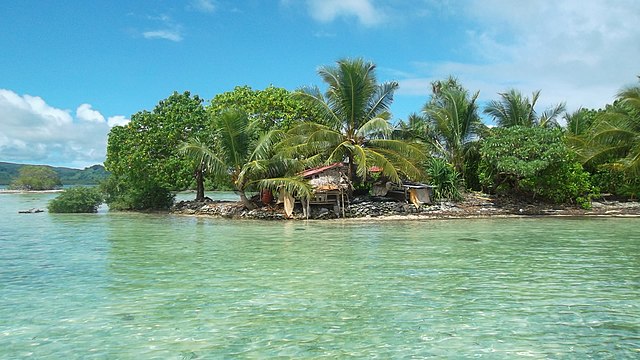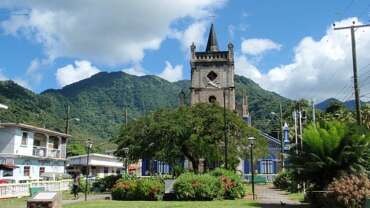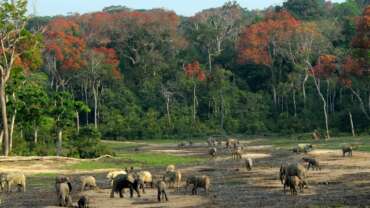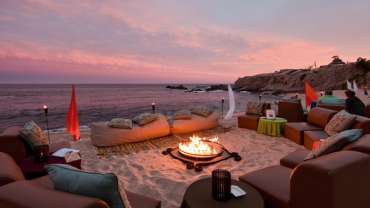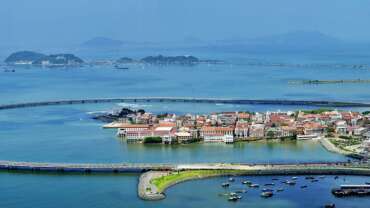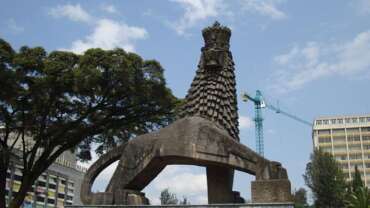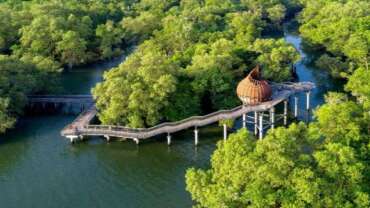Welcome to the Federated States of Micronesia!
The 607-island nation that is the Federated States of Micronesia is one of the most remote and beautiful places on earth. Friendly and peaceful, it encompasses nearly a million square miles of ocean north of the equator that is home to a cultural and biological diversity that is unrivaled anywhere.
The Federated States of Micronesia sits in the heart of the Caroline Islands Archipelago, a vast seascape that extends from Palau in the west to Kiribati in the east. Situated within a rich center of biodiversity at the convergence of the major currents of the Indian Ocean, the Philippine Sea and the great Pacific Ocean, it is home to the world’s greatest coral reefs and the best pelagic fisheries remaining in the world today.
The FSM is made up of four groups of island States in geographic graphic sequence from west to east: Yap, Chuuk, Pohnpei and Kosrae. Each has considerable autonomy and each is equally unique with its own geography, ecology, language and culture. This cultural identity is exhibited by the 17 indigenous languages used and very much alive today.
History of Micronesia
The eastern Caroline Islands, like the Marshall and Gilbert islands, were probably first settled from the area of the New Hebrides (now Vanuatu) and Fiji sometime before 1000 BCE. Archaeological and linguistic evidence suggests that the earliest migrants worked their way up the chain of islands to the east and gradually spread westward from the Marshalls. Pottery dating to about the 1st century CE has been found in Chuuk, and artifacts of similar antiquity have been unearthed in other islands in the east. The languages of the area, with the exception of Yap and the two Polynesian outliers, Kapingamarangi and Nukuoro atolls, are closely related to one another and show striking similarities to Vanuatuan tongues.
The high island of Yap appears to have been settled from the west, probably from the Philippines or Indonesia. Pottery and shell adzes found there date from the 2nd century CE and show a resemblance to types discovered in the Mariana Islands. Yap’s caste system and other features of its social organization are unparalleled elsewhere in the area. The renowned Yapese stone money was quarried in nearby Palau and the Marianas. In later centuries a reciprocal tribute and trade system was evolved with the surrounding coral atolls, sometimes termed the Yap empire, or Yapese empire. In the eastern islands of Pohnpei and Kosrae, some seven centuries ago, a major social upheaval occurred, possibly under the impact of invasion from the south. Fortified settlements were built of huge basaltic logs, their ruins still visible today, and political authority over each island was centralized even as the society became more stratified.
The islands were visited occasionally during the 16th century by Spanish navigators and were later named for the Spanish king Charles II. During the 19th century, European naval ships followed whalers and traders to the islands, and the inhabitants experienced their first intensive contact with foreigners. In 1886 Spain finally colonized the Carolines, but its short rule was ended in 1899 when the islands were sold to Germany at the conclusion of the Spanish-American War. Germany, in turn, yielded the islands at the outbreak of World War I to Japan, which gained formal title to them in 1920 as a League of Nations mandate. At first Japan attempted to develop a solid economy; later it used the islands as an outlet for surplus population; and finally it fortified them just before World War II. In July 1947 the Carolines, together with the Marshalls and Northern Marianas, became the United Nations Trust Territory of the Pacific Islands, under U.S. administration. They were designated as a strategic area to allow the United States to set up military bases as deemed necessary; consequently, ultimate responsibility for the trust territory rested with the UN Security Council rather than with the UN General Assembly, as was the case with other trust territories.
Micronesian leaders began negotiations with the United States for full self-government in 1969. The constitution that was drafted in 1975 became the basis for the federated government that went into effect in 1979. By that time, however, the Marianas, the Marshalls, and Palau had voted to separate from the proposed federation; this left only the “inner states” of Yap, Truk (later Chuuk), Kosrae, and Ponape (later Pohnpei) to compose the new political entity, the Federated States of Micronesia. In a 1983 plebiscite, voters approved a Compact of Free Association with the United States. The compact, which became effective on Nov. 3, 1986, provides for internal self-government while requiring that the United States remain responsible for defense and external security and that it provide financial assistance. The articles of the compact allow the Federated States of Micronesia to become fully independent and alter its relationship with the United States at any time, providing this change of status is approved in plebiscites. Although the original compact had a 15-year duration, it was renewed by mutual consent in 2003 for another 20 years, with some amendments. The renewed compact came into force in 2004. The Federated States of Micronesia became a member of the UN on Sept. 17, 1991.
The late 1990s were difficult for the islands, with Pres. Bailey Olter suffering an incapacitating stroke in July 1996, just after he had been reelected and just before a series of natural disasters swept the islands. Typhoons, flooding, and mudslides caused widespread destruction in 1996 and again in 1997, and in 1998 a prolonged drought attributed to the El Niño weather pattern forced the declaration of a state of emergency. During the following two years, cholera outbreaks killed several dozen people on Pohnpei, leading to the institution of a national vaccination program. In Chuuk state a longstanding movement sought separate administrative status for the Faichuk Islands; in the early 21st century, legislation was introduced in the National Congress to have Faichuk admitted as the fifth state.
People of Micronesia
The people of the Federated States, while generally classified as Micronesian, are very diverse culturally and linguistically. The people of Yap Island speak Yapese, a language only distantly related to the other languages of the area (which are known as Nuclear Micronesian languages). Inhabitants of the coral atolls in Yap state are similar in language and culture to the people of Chuuk, although the Chuukese and Yapese languages are not mutually intelligible. Both Chuuk and Pohnpei contain several dialects, and the inhabitants of Kapingamarangi and Nukuoro, two atolls in the southwestern portion of Pohnpei state, are Polynesians and speak languages unrelated to Pohnpeian. Only Kosrae has complete ethnic and linguistic unity. Altogether, eight local languages are recognized as distinct, and dialectal differences in the outlying atolls add further variety.
About half the total population lives in Chuuk state. Pohnpei has about one-third of the population, and Yap and Kosrae have about one-tenth each. In the late 20th century there began a trend toward migration to the towns for employment and education; more than one-fifth of the population was considered urban by the 2010s. The population growth rate is one of the highest in the region. Nearly three-fifths of the population is under the age of 30. Almost the entire population is Christian; more than half the people are Roman Catholic, and another two-fifths are Protestant. The country has no official language, but English is spoken widely in government and commerce.
Art & Culture of Micronesia
Cultural Life
Although only the people of Yap and a few outlying atolls in Chuuk still wear traditional dress—loincloths for men and grass skirts or lavalavas (sarongs) for women—most villagers live much as their ancestors did. In rural areas they support themselves by subsistence farming and fishing, use traditional food-preparation techniques, and gather in community meetinghouses for ceremonies and leisure activities, although imported foods and ways of life have made their way into even the most remote areas.
Boatbuilders in some of the remote atolls and islands, such as Satawal in Yap state, have maintained their skills in the construction and navigation of large single outrigger canoes. The seamanship of the islanders is probably their most remarkable achievement and has astonished Westerners since initial contact. Wood carving, originally practiced for religious purposes, has become a commercial enterprise. Women in some of the islands weave lavalavas on traditional belt looms, and nearly everywhere large sleeping mats are plaited of pandanus leaves. Tattooing, once used widely to indicate social status, is seldom practiced today. The traditional dances remain a favourite form of entertainment. For information on the arts of Micronesia in a regional context, see Oceanic art and architecture.
Scuba Diving & Snorkeling
FSM reefs and ocean are some of the cleanest and clearest waters in the world and are comfortable for diving and snorkeling all the year round. Schools of tuna, barracuda and trevaly, pods of dolphins, turtles, Grouper aggregations and colorful collections of many tropical fish are commonly found. Yap and Pohnpei are famous for their world-renowned reef passes that have large groupings of giant manta rays, where divers and snorkelers can encounter these magnificent and gentle creatures up close and personal as the mantas feed on nutrients and plankton year-round.
In Kosrae, it is not unusual for the visibility under the water on and around the pristine fringing reef of the island to reach 60. There are over 172 types of hard coral and 10 types of soft coral, with an abundance of beautiful sea anemones and over 250 species of reef fish as well as other pelagic species that often venture near to the reef. Grey reef sharks, which are known to be quite harmless, are also a constant presence in and around the fringing reef. Chuuk Lagoon is the known as the wreck diving capital of the world and any diver worth his or her salt should dive the sunken armada of the Japanese Fourth Imperial Fleet at least once in their lifetime.



